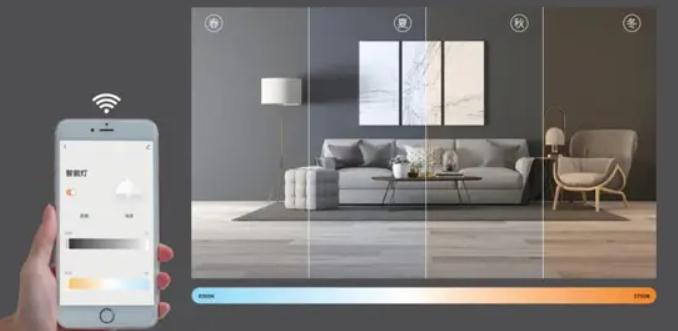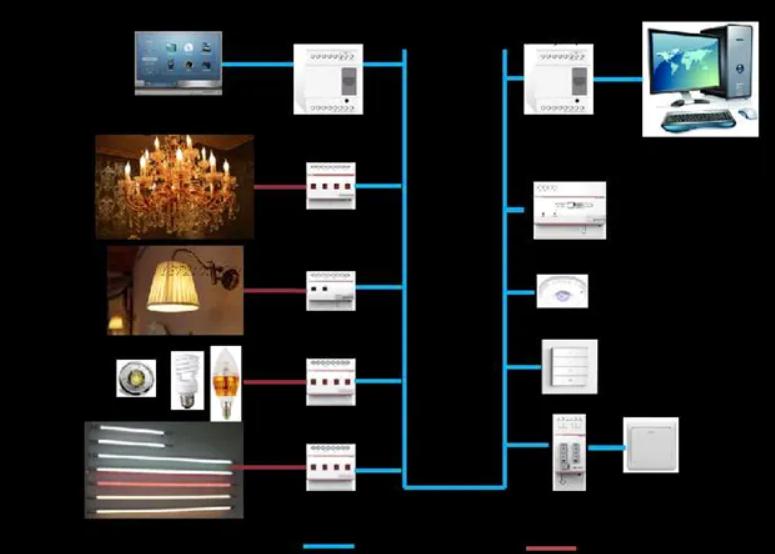With the improvement of our living standards, the lighting effects of work and home play an increasingly important role in our lives. The lighting effect should not only provide good visual conditions for work and life, but also use ambient natural light and various lamps to create an indoor environment with a certain aesthetic sense to meet people’s physical and spiritual needs. Dimming is often used in high-end hotels, restaurants, conference rooms, lecture halls, and theaters to create atmospheres, create a sense of intimacy, and delight audiences and diners. For daily home environment, dimming can also reduce energy consumption and enhance the function of space, dynamic changes create different lighting atmospheres and protect our eyesight!

In daily life, the benefits of dimming in smart lighting are obvious:
The first benefit: the light is gradual instead of abrupt, the eyes are easier to adapt
When the light is turned on, the light gradually becomes brighter from dark; when the light is turned off, the light gradually becomes darker from bright to dark, so as to avoid sudden changes in the brightness of the light from irritating the eyes, which can not only protect the eyes, but also bring us a comfortable feeling. Especially when we get up in the middle of the night to go to the bathroom, too high brightness stimulation brings us a very bad feeling, which often affects our sleep.
Second benefit: dimming with smart lighting maximizes energy savings
With the continuous improvement of people’s living standards, luxury lamps and lanterns are quietly popularized in modern home decoration. Elegant and magnificent chandeliers and ceiling lamps have become the preferred lamps for home decoration. In order to create a magnificent effect, the chandeliers and ceiling lamps are getting bigger and bigger, and the combined lamp heads are also used more and more, and the power consumption is also increasing. If smart lighting is used for dimming, energy saving can be maximized.
1. There is natural light from the outside world in the living or workplace, and the light output can be reduced by natural light compensation.
High-end places (such as hotels and clubs) have very high requirements for the environment created by lighting, not only to reflect high-end taste and strengthen their own image, but also to feel the comfort brought by lighting effects at any time. In addition to meeting the lighting needs, the lighting arrangement should also pay attention to the coordination with the building decoration and the integration with the environmental atmosphere, showing a magnificent and layered lighting art effect.
2. For the newly installed lighting system, the maintenance factor of the lighting system is considered in the design, and the light output at the initial stage of use usually exceeds the actual demand by 20%-40%;
We often encounter such a situation. The newly purchased lamps or newly renovated offices are always very bright at the beginning. If you work overtime in such an environment for a long time, you often feel that the lights are dizzy. ! But after a period of time, you will find that the lamps will not be so bright. Why does this happen? This is because the maintenance factor of the lighting system is considered in the lighting design, and the light output at the initial stage of use usually exceeds the actual need by 20%-40%. Chinese middle school students spend about 60% of their time in the classroom every day. Too dark and too bright lighting, stroboscopic lighting, glare caused by light, etc., are easy to cause eye fatigue, which is one of the main reasons for the decline of eyesight in primary and secondary school students in my country.
3. Light pollution caused by excessively strong and flickering lighting causes interference and damage to the human body, prompting pupil contraction and increasing adjustment, which is very likely to cause eye fatigue and decreased vision.
Quoting a survey of foreign medical researchers:

In a study of more than four people with myopia between the ages of 2 and 16, researchers found that infants under the age of two who slept in the light were four times more likely to develop myopia than those who slept in the dark. Only 10% of children who slept in the dark suffered from myopia; 34% of children who slept under lighting at night suffered from myopia, and 55% of children who slept under strong lighting indoors suffered from myopia. Relevant experts pointed out that the first two years after birth is a key stage for the development of eyes and focal length adjustment functions. The amount of light and dark time may affect the development of children’s vision. Hope that parents should treat it with caution.
To a large extent, traditional lighting effects only serve the basic needs of lighting up the environment. Therefore, it is necessary to use smart lighting to improve our quality of life. The application of intelligent lighting with dimming technology to the home and working environment can not only save energy, but also significantly improve the comfort of lighting, and can significantly improve the environmental experience such as comfort and living style in life.



